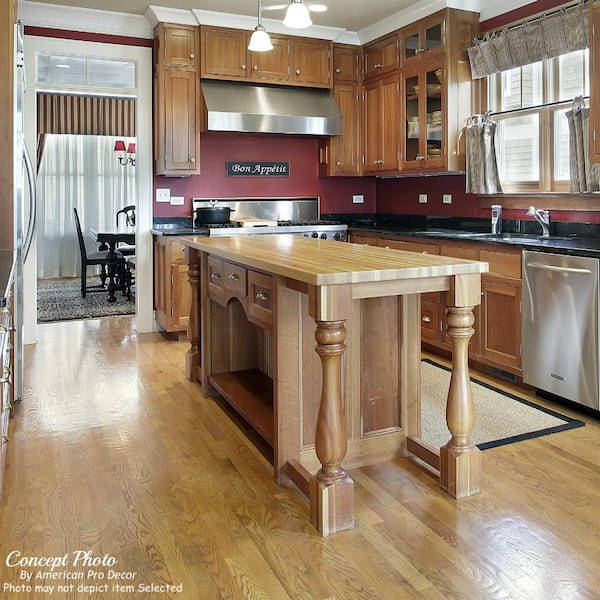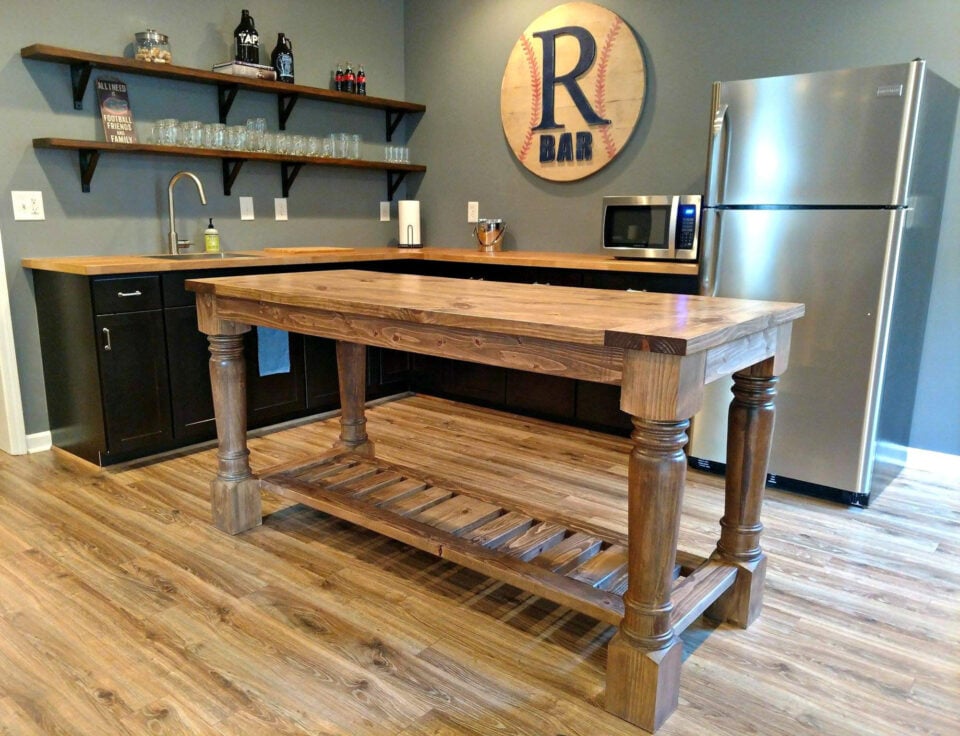Change Your Area with Innovative Kitchen Island Leg Designs
Change Your Area with Innovative Kitchen Island Leg Designs
Blog Article
Discovering the Important Attributes of a Kitchen Island Leg for Your Culinary Space
The kitchen island offers as a central hub in any cooking area, and the selection of leg layout is pivotal in boosting both its performance and aesthetic allure. Recognizing the essential functions of kitchen area island legs-- consisting of material alternatives, style styles, and stability aspects-- can significantly affect the overall experience within the kitchen.
Value of Kitchen Island Legs
Cooking area island legs play an essential role in both the performance and aesthetics of a kitchen space. They not just support the weight of the island however likewise improve the total style, adding to the kitchen area's aesthetic appeal. The choice of legs can dictate the design of the cooking area, be it contemporary, typical, or rustic.
Functionally, durable and properly created legs make certain stability, permitting the safe use the island for numerous tasks such as cooking, eating, or enjoyable. Strong legs prevent changing and tottering, supplying a reputable surface for daily tasks.
Furthermore, the height and placement of the legs can affect the convenience level for those seated at the island. A well-considered elevation can suit bar stools or chairs, promoting an inviting atmosphere for gatherings.
Along with these practical considerations, cooking area island legs can act as a focal point in the area (kitchen island leg). Attractive or distinctively created legs can raise the design aesthetic, making the island a centerpiece. Thus, choosing the ideal cooking area island legs is necessary for stabilizing type and feature in any kind of cooking room
Product Options for Legs
Picking the proper material for kitchen island legs substantially influences both sturdiness and design. Common material options include metal, stone, and timber, each offering distinctive benefits.
Wood is a prominent selection because of its warmth and flexibility. It can be quickly personalized to match various decor styles, from rustic to modern. Hardwoods like oak and maple provide superb stamina and long life, while softer woods can be a lot more at risk to use and tear.
Steel legs are favored for their sleek, modern visual. kitchen island leg. Stainless-steel and light weight aluminum are not just robust yet likewise immune to rust and rust, making them optimal for cooking area atmospheres. They can create an industrial look and are commonly available in different surfaces to enhance various other kitchen area elements
Rock legs, such as granite or marble, include an element of deluxe and stability. While larger than other materials, they provide remarkable longevity and can endure considerable weight. However, they may call for additional assistance to guarantee proper balance.
Ultimately, the option of material ought to align with both practical demands and the general style vision of the kitchen area room, ensuring that the island legs enhance both energy and looks.
Design Styles to Take Into Consideration
What layout styles should be thought about when selecting legs for a kitchen area island? The selection of leg style substantially influences the total aesthetic of your culinary space. For a modern kitchen area, streamlined and minimalistic leg layouts, such as stainless-steel or geometric forms, can improve the modern-day charm, giving a clean and minimalist look.
On the other hand, standard kitchen areas gain from classic styles such as transformed or carved wooden legs, which include warmth and personality. These alternatives typically feature complex information that complement vintage home furnishings. For a rustic ambiance, take into consideration legs made from redeemed wood or wrought iron, which bring an organic, earthy quality to the space.
If you lean towards a commercial motif, durable steel legs with a distressed finish might be excellent, offering an edgy yet sophisticated touch. In addition, farmhouse style cooking areas can integrate beefy legs that evoke a sense of sturdiness and homeliness.

Elevation and Stability Elements
The elevation and stability of a cooking area island are essential aspects that straight influence its capability and user experience. A suitable cooking area island leg need to offer sufficient elevation to accommodate a variety of tasks, from food preparation to informal eating. Generally, cooking area islands stand in between 36 to 42 inches high, lining up with common counter and bar heights. This range makes sure comfort for customers while executing various tasks, therefore boosting the overall functionality of the space.
Stability is just as essential, especially as cooking area islands commonly serve as prime focus in culinary environments. A stable leg Find Out More design reduces tottering and moving, which can lead to crashes or pain during use. Products such as solid timber, metal, or a mix thereof are typically used to accomplish the needed toughness. The leg's accessory to the island's base must be protected, making sure long original site life and resilience versus the wear and tear of everyday use.
Personalization and Devices
Modification choices and accessories for kitchen island legs can significantly improve both the aesthetic allure and performance of the area. Home owners can select from a range of products, including stone, metal, and timber, enabling smooth combination with existing kitchen area style. The selection of coating-- be it a natural tarnish, repaint, or powder finish-- more personalizes the look, guaranteeing that the island enhances the overall design motif.
In addition to product and coating, house owners may likewise check out the incorporation of accessories such as decorative brackets, adjustable feet, or incorporated shelving. Brackets can offer additional assistance while adding to a contemporary or rustic visual. Flexible feet are specifically useful for unequal floor covering, making sure the island continues to be stable and degree, which is essential for both safety and security and functionality.

Conclusion
In verdict, cooking area island legs offer a crucial role in giving stability and enhancing the overall visual of the culinary room. Modification alternatives and accessories can boost the kitchen island, making it an important site unique focal factor within the home.
The kitchen area island serves as a main hub in any culinary space, and the selection of leg style is essential in improving both its performance and visual charm. Recognizing the necessary functions of kitchen area island legs-- consisting of product choices, layout styles, and stability elements-- can considerably impact the general experience within the kitchen.Kitchen area island legs play a critical function in both the capability and looks of a kitchen room.What layout styles should be considered when selecting legs for a cooking area island?In verdict, cooking area island legs serve a critical function in providing stability and enhancing the general aesthetic of the cooking area.
Report this page